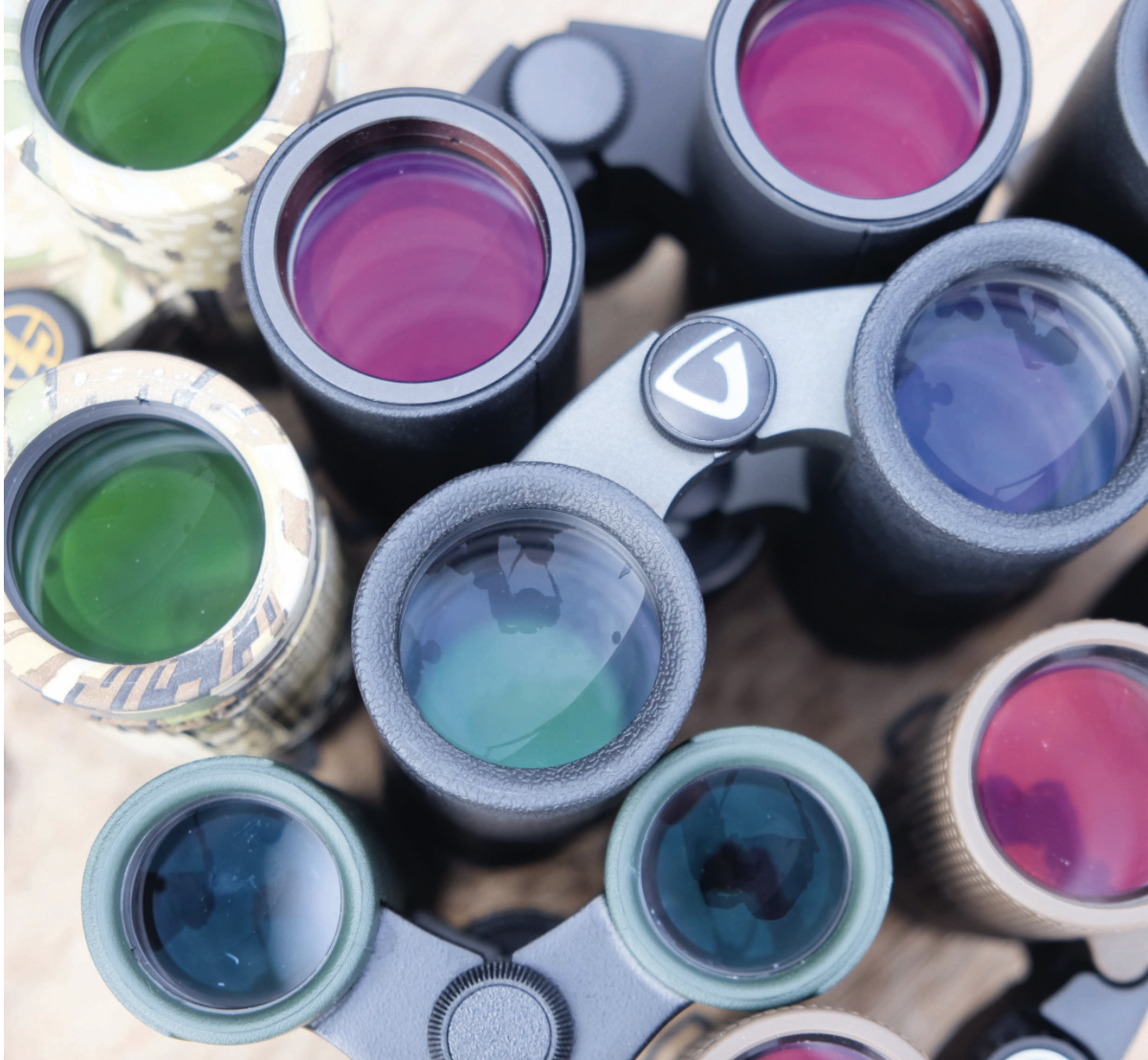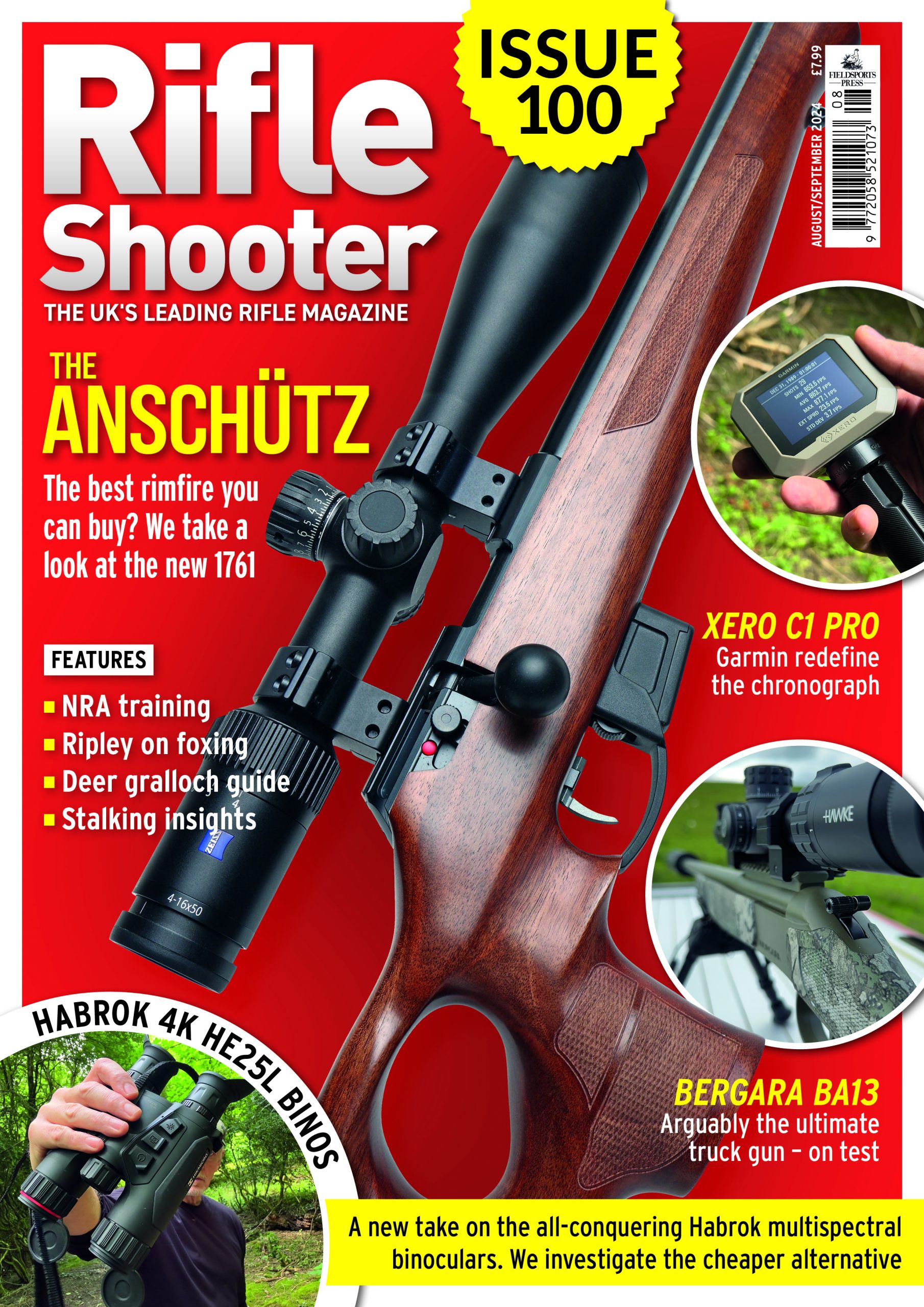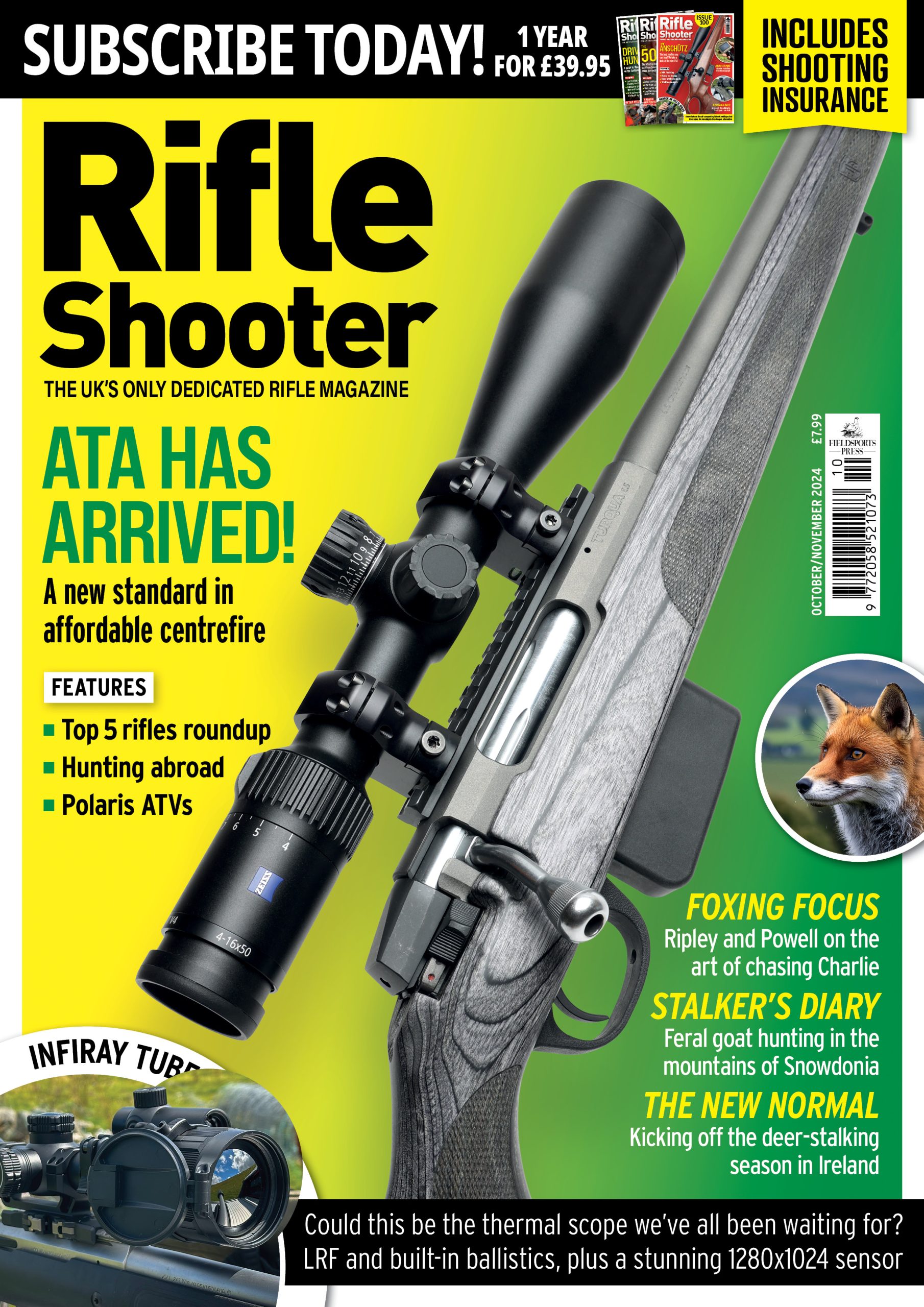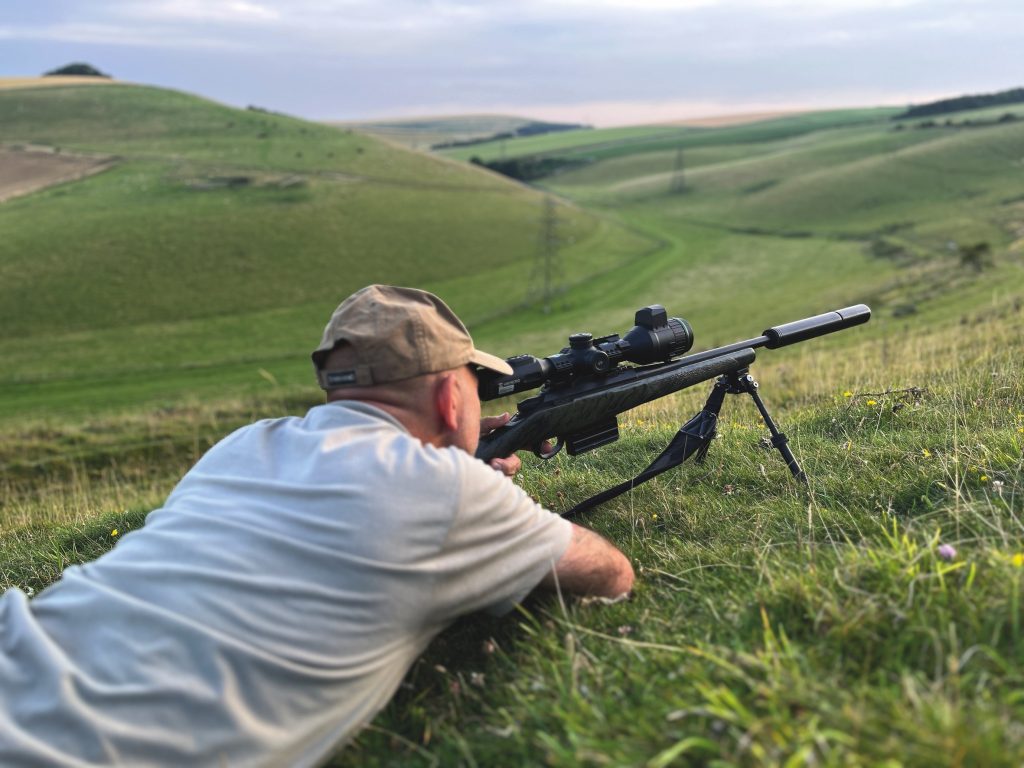Premium glass
There are few people who have tested and evaluated sport optics as much as Andrew McKean. For the past two decades he has conducted a comprehensive annual review of every brand’s latest binoculars. Here he compares and contrasts functionality and performance

The best hunting binoculars available in 2025 range from compact models for travel and woodland stalking to large tripod-mounted options built for scanning wide landscapes. Some include electro-optics that integrate laser rangefinding with observation. Prices vary widely, from affordable entry-level models to high-end heirloom-grade gear.
All these optics will help hunters see and identify game more effectively. However, the most advanced models also improve shooting accuracy, with features like built-in ballistic calculators and GPS navigation.
While many optics brands are pushing toward digital displays and electronic integration, others are doubling down on timeless craftsmanship. It is encouraging to see companies investing in premium analogue binoculars without power buttons or circuit boards.
In 2025, Swarovski, Vortex, Zeiss, Leupold and Bushnell have all launched new binocular lines. Their offerings include traditional glass at nearly every performance and price level.
Zeiss Conquest HDX 10×42
RRP £1,100
zeiss.co.uk
While this excellent binocular shares the name with Zeiss’s mid-priced Conquest line, the new HDX is made in Japan, not Germany. But it features premium glass, thoughtful touches such as a locking diopter and rapid focus wheel, and retails for £1,100, which makes this an excellent value.
The new Zeiss turned in top image scores, thanks to excellent coatings, sharp edge-to-edge clarity and faithful colour renditions. The testers also liked the nicely tapered eyecups and field-flattening lenses that boost field of view and minimise astigmatic bulging that can cause peripheral distortions.
The version in our test was a pre-production prototype and we noted a bit of a hitch in the focus wheel. But we expect that issue to be resolved once this is produced and quality controlled. Aside from its blameless optical performance, some testers worried that consumers may confuse the HDX line with the Conquest HD line, which has been on the market for a decade. It is a fair observation, especially because the new Japan-sourced HDX binoculars perform on par with the German-produced Conquest HD.
We also wondered about its retro design. While most upper-level binoculars are playing with two-tone colourways and distinctive textures, the Zeiss is old school, in basic black and with a hinge design that would not have been out of place 15 years ago. What is new is its excellent glass and image, attributes that are timeless and exactly in keeping with what you would expect from Zeiss.
Leica Geovid R 15×56 LRF
RRP £2,110
leica-camera.com
This excellent long-range hunting optic combines three of Leica’s core strengths: laser rangefinding, premium observation and ergonomic design.
Despite its blocky lines, the Geovid R balances well and offers sure, precise controls. It performs well on a tripod, although it cannot use a standard tripod mount, which may require users to find an alternative solution. This is important, as its 15x magnification makes steady viewing critical.
The Geovid R excels when glassing from a fixed position in expansive terrain. Whether scanning mountainsides or open farmland, this optic is for those who wait and watch. It lets you range and observe in a single field of view, without having to fumble for another device.
The Geovid R lacks app connectivity and on-board ballistic systems, which are available in the Geovid Pro. However, the simplicity is part of the appeal. It is ideal for hunters who want fast, accurate distance readings without unnecessary digital extras.
With both angle-adjusted and line-of-sight ranging, the Leica gives precise aiming information. The image is bright and clear, especially when tripod-mounted, and often replaces mid-range spotting scopes. Its price is well justified for the performance offered.
While it may not have every modern feature, the Geovid R remains one of the top choices for hunters who prioritise clarity and precision in the field.
Vortex Razor UHD 8×32 and 18×56
RRP £1,599 and £1,999
csw.company
We tested Vortex’s flagship Razor UHD binoculars in compact 8×32 and large 18×56 formats. While each has a distinct role, both share high-end glass, robust construction and smooth handling.
The 8×32 version is ideal for travel and quick spotting. It offers a surprisingly large image for its size and can be used comfortably one-handed. Testers praised its balance and the well-placed thumb indents in the chassis.
The 18×56 model is a tripod-focused tool for detailed glassing over long distances. Its design includes a thoughtful curve in the barrels to accommodate interpupillary adjustment and tripod mounting, even for smaller users.
Both versions feature precise controls, including a locking diopter and three-stage eyecups. We found the pricing fair considering the performance and extras, including Vortex’s premium GlassPak Pro harness and rangefinder pouch.
Leupold BX-4 Pro Guide HD Gen 2 10×42 and 12×50
RRP £699 and £799
vikingshoot.com
Leupold’s BX-4 Pro Guide HD line offers practical sizes for a range of hunting situations. These binoculars sit between entry-level and top-tier optics, offering good value for the money.
We tested the 10×42 for general use and the 12×50 for long-range viewing. Each model ships with three interchangeable Form-Fit eyecups, allowing users to customise comfort and block stray light. This is a thoughtful upgrade in a segment not known for innovation.
However, the optics fell short of expectations. Testers noted blue fringing, narrow field of view and edge distortion. The 10×42’s 314ft field at 1,000 yards is on the tight side. Also, the tripod mount placement affects balance.
Despite optical limitations, these binoculars are rugged, adaptable and supported by Leupold’s well-made Pro Guide harness, which enhances their overall value.
HAWKE FRONTIER ED X 8X42 AND 12X50
RRP £499 and £469
uk.hawkeoptics.com
The Frontier ED X, built around very good extra-low dispersion glass and responsive controls, is a good example of the British brand’s midpriced, value-packed optics. For an 8x in a field of 10x binoculars, the Frontier ED X held its own, scoring near the bottom of the low-light test but posting an exceptional resolution score. Testers liked the trim eyecups and nicely textured armour.
We also tested the 12×50 version and, while the glass is underwhelming, its even balance and responsive controls make it a good choice for a walkabout optic that can easily be stabilised on supports such as fence posts and backpacks. It’s a good choice for a hunter on a budget who wants powerful binoculars for open fields.
Image scores for the 8×42 version were in the middle of the field. Our OPTICS TEST testers generally liked the brightness, edge sharpness and the overall tone of the image, but most noted flaring and other optical aberrations, probably as the result of poorly finished interior blacking.
The focus wheel also requires nearly three revolutions to zoom from close focus to infinity. One of the quiet advances in binocular technology is focus wheels that cover the entire focal length in two or fewer turns, and we’d like to see Hawke apply this to its offerings.
Like others in the Frontier ED X line, Hawke has it in both grey and green armour in 8×32, 10×32 and 10×42 in addition to the 8×42. The binos ship with a premium zippered vinyl semi-hard case and carry strap, a feature that added to its high price/value score.
SWAROVSKI NL PURE 10X52 AND 14X52
RRP £2,910 and £2,950
swarovskioptik.com
Once you recover from the startling price of these Austrian-made binoculars, try to experience the image and the design that start to justify their cost of £100 per ounce. In terms of image quality, low-light performance and ergonomics, the NL Pure – in both 10×52 and 14×52 – are among the most remarkable binoculars we have tested.
As you might imagine, the 10x and 14x models serve different purposes. The former is ideal for walkabout hunting, hiking and travel. The 14x model can be stabilised by hand, but performs best when attached to a tripod or similar support.
Swarovski introduced the roof-prism model four years ago in three configurations: 8×42, 10×42 and 12×42 – a seemingly extreme magnification at the time. These optics work as shake-free handhelds thanks to the balance-enhancing shape of the barrels.
This year, the company extended the line with a series featuring 52mm objective lenses. Swarovski calls the NL Pure a wasp-waist design. A new optical prescription and redesigned prism allow the chassis to support large objective lenses, a slim mid-section and oversized eyepieces fitted with field-flattener lenses to enhance edge sharpness.
This design also enables a vast field of view. The 10x NL Pure boasts a 130m FOV at 1,000m – wider than most 8x binoculars and far beyond any other 10x optics we have tested.
These binoculars are not ideal if you plan to use a standard tripod. One of the more frustrating aspects of Swarovski’s design is its proprietary front-hinge tripod socket. The NL Pure features a unique click-lock socket that only accepts Swarovski’s dedicated tripod mount, sold separately for around £200. The added magnification of the NL Pure 14×52 makes this tripod-mounting interface essential.
Despite these small external drawbacks, the NL Pure’s image quality and low-light performance are astonishing. The vibrant, bright and detailed image consistently drew testers to the Swarovski whenever a better look at distant subjects was needed.
Related Articles
Get the latest news delivered direct to your door
Subscribe to Rifle Shooter
Elevate your shooting experience with a subscription to Rifle Shooter magazine, the UK’s premier publication for dedicated rifle enthusiasts.
Whether you’re a seasoned shot or new to the sport, Rifle Shooter delivers expert insights, in-depth gear reviews and invaluable techniques to enhance your skills. Each bi-monthly issue brings you the latest in deer stalking, foxing, long-range shooting, and international hunting adventures, all crafted by leading experts from Britain and around the world.
By subscribing, you’ll not only save on the retail price but also gain exclusive access to £2 million Public Liability Insurance, covering recreational and professional use of shotguns, rifles, and airguns.
Don’t miss out on the opportunity to join a community of passionate shooters and stay at the forefront of rifle technology and technique.




